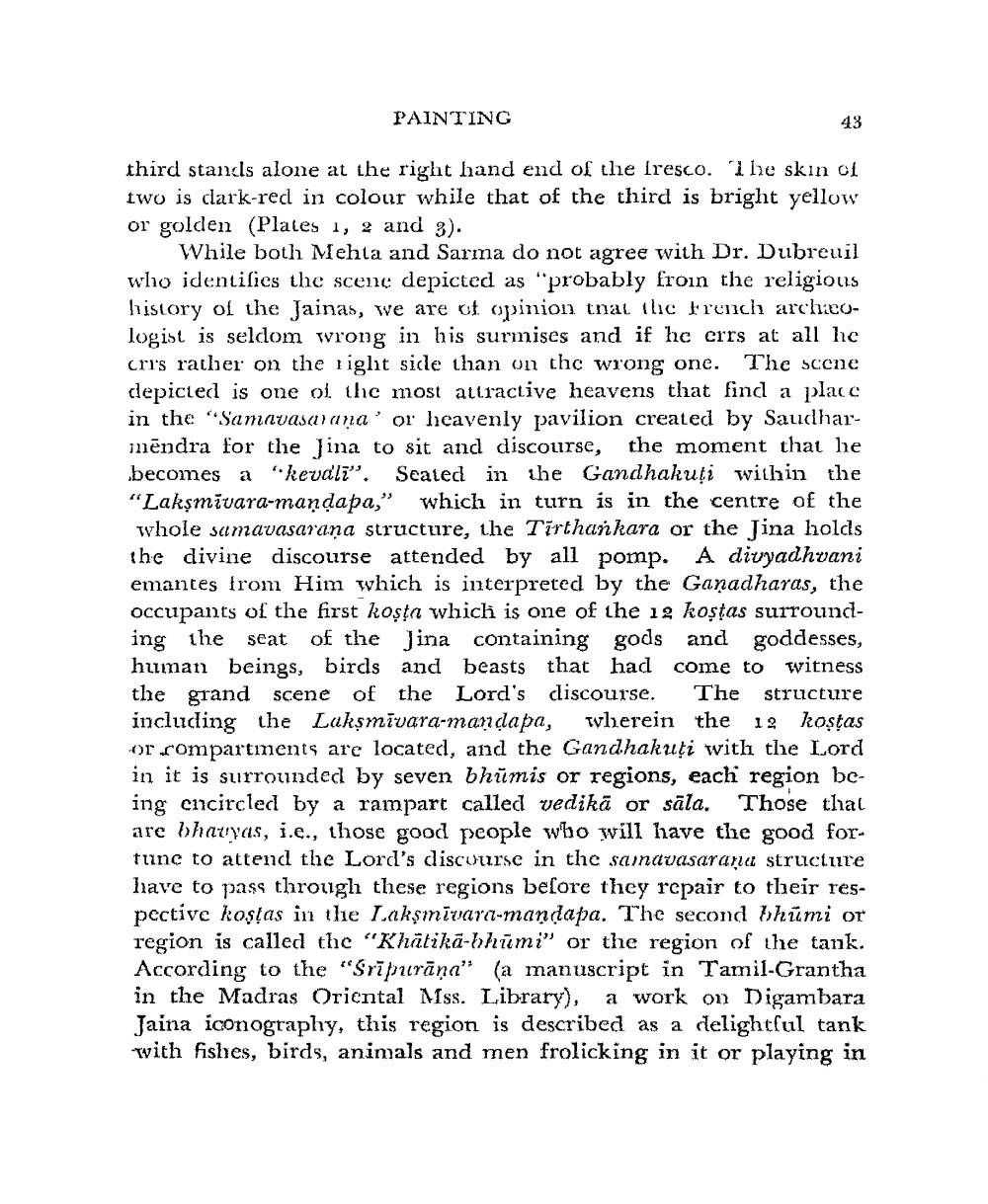________________
PAINTING
43
third stands alone at the right hand end of the Iresco. The skin of two is dark-red in colour while that of the third is bright yellow or golden (Plates 1, 2 and 3).
While both Mehta and Sarma do not agree with Dr. Dubreuil who identifies the scene depicted as "probably from the religious history of the Jainas, we are of opinion that the French archæologist is seldom wrong in his surmises and if he errs at all he crrs rather on the right side than on the wrong one. The scene depicted is one of the most attractive heavens that find a place in the "Samavasarana or heavenly pavilion created by Saudhar mendra for the Jina to sit and discourse, the moment that he becomes a "kevali". Seated in the Gandhakuti within the "Lakṣmivara-manḍapa," which in turn is in the centre of the whole samavasarana structure, the Tirthankara or the Jina holds the divine discourse attended by all pomp. A divyadhvani emantes from Him which is interpreted by the Ganadharas, the occupants of the first kosta which is one of the 12 kostas surrounding the seat of the Jina containing gods and goddesses, human beings, birds and beasts that had come to witness the grand scene of the Lord's discourse. The structure including the Lakṣmivara-manḍapa, wherein the 12 koṣṭas or compartments are located, and the Gandhakuti with the Lord in it is surrounded by seven bhumis or regions, each region being encircled by a rampart called vedikā or sāla. Those that are bhavyas, i.e., those good people who will have the good fortune to attend the Lord's discourse in the samavasarana structure have to pass through these regions before they repair to their respective kostas in the Laksmivara-maṇḍapa. The second bhumi or region is called the "Khātika-bhūmi" or the region of the tank. According to the "Sripurāna" (a manuscript in Tamil-Grantha in the Madras Oriental Mss. Library), a work on Digambara Jaina iconography, this region is described as a delightful tank with fishes, birds, animals and men frolicking in it or playing in




